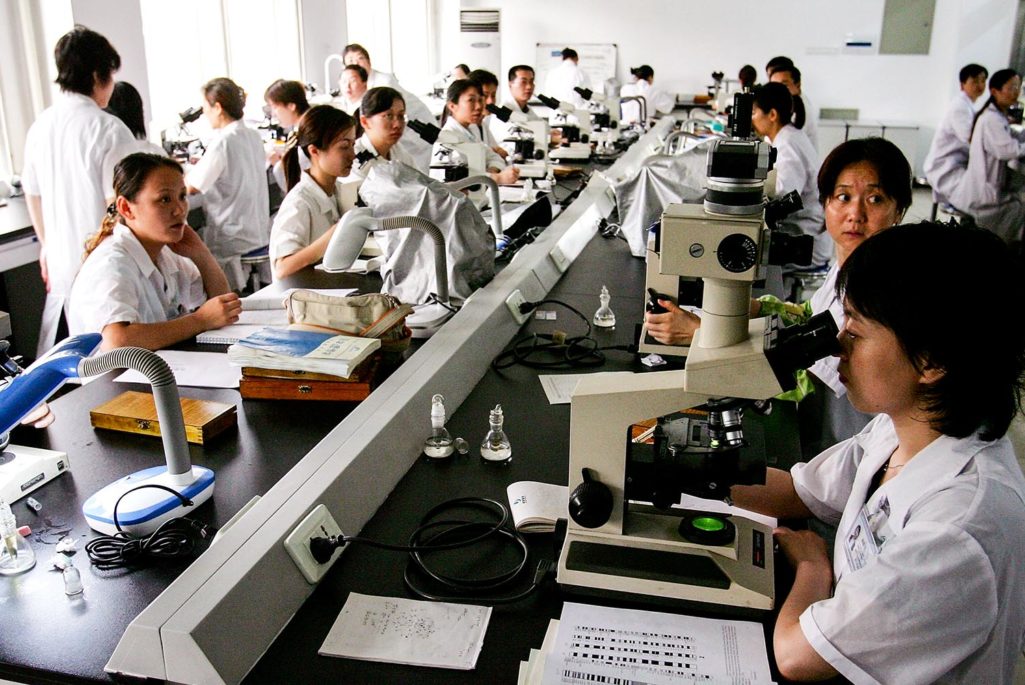Medtech in China: The Impact of Reforms

Chinese scientists work at the national laboratory of medical genetics of China in Central South University in Changsha city, Hunan province of China.
Photo: Guang Niu/Getty Images
The Chinese medtech market is one of the largest and fastest-growing in the world, growing at a rate of 12 percent in 2016 alone. Going forward, one of the key factors that will shape the development of China’s medtech market is the regulatory landscape, including rules governing the industry, government policies relating to the sector and reforms in the space.
There are a few changes expected in the next few years, for example: the government assuming a greater burden of healthcare expenses, the implementation of cost controls through packaged pricing and limiting the markups added by distributors.
There are other regulations and trends affecting China’s healthcare policy, too, as there are ways to handle them.
Long-term Nursing
In June 2016, the Office of the Chinese Ministry of Human Resources and Social Security issued The Guidance on the Long-term Nursery Reimbursement Pilot Policy. The policy aimed at providing financial support or care provisions for people with long-term disabilities.
- Fifteen pilot cities were selected for the first trial of this policy. It stipulates that the government should raise money by optimizing the structure of workers’ medical care accounts; that is, transferring the balance of workers’ medical care funds and regulating the rates for medical reimbursement. This should gradually establish a multi-channel and dynamic financing mechanism.
- For long-term care costs and covering related provisions, the reimbursement fund will cover 70 percent of the total payment.
Full Medical Reimbursement (Pending)
In the near future, the Chinese government is committed to providing full medical reimbursement coverage for all Chinese citizens. To achieve this goal, the government will improve its management mechanism and involve other social organizations—such as commercial insurance institutions—to handle such services.
The government will simultaneously establish a multi-level, targeted social security system. While some high-end needs may be supplemented by commercial insurance, the government will be responsible for the remaining parts.
At the initial stage of the policy, the medical reimbursement fund will bear most of the financing obligations, without increasing the burden on businesses or individuals. In the long term, individuals and businesses should bear corresponding portions of the payment to ease the financial pressure off the government.
Impacts and Control Mechanisms of China’s Reimbursement Regulation
It also makes sense for companies to prepare to compete with the local industry; this involves being able to gauge the chances of profitably surviving the battle in this market segment.
There are 6,000 local Chinese companies, although a majority of these are active in the lower-tech areas. That notwithstanding, they still demonstrate a sizable local manufacturing and sales force that has distinct advantages within the market.
The Chinese (medtech) regulatory system—including the reimbursement process—is required to not only satisfy the standard requirements, which we are acquainted with from most other countries in the world, but is also intended to have other impacts.
The Chinese medtech market is growing—but operating in it is a challenge, given the shifting regulatory landscape.
As with most regulatory implementations, the central purpose of the Chinese healthcare measures is control. From this central objective, other impacts are achieved and other objectives are brought forward. The key elements include:
- Controlling the financial aspects of healthcare provisions and reimbursements, where affordability signifies the sustainability of service provisions; allowing potential expansions of coverage and treatment options and seeking accessibility to healthcare for as many citizens as possible.
- The adaptations and alterations of the patient care paths that develop in correlation to reimbursement measures. Doctors’ treatment options are directly impacted by the extent to which products are affordable, available and adoptable for them and the patients.
- Protection of the local industry. China’s regulatory framework firmly seeks to foster and boost its domestic production capacity and local industrial strengths.
Importance of Local Know-how and Strategy Formulation
The preparation efforts required for working with the Chinese administrative system, both in regard to understanding and dealing with it, makes resource deployment shift from the middle or end of the cycle to the beginning or middle of the cycle.
Registration and other pre-launch activities are not abnormal, but the unusually lengthy and complicated trajectory to obtain the proper reimbursement is quite China-specific. While comparable markets, such as Japan, have set up barriers at registration levels, China has an additional minefield at the level of reimbursement, embedded in a difficult tendering and bidding mechanism.
These bidding-related challenges and other factors to consider are:
Discrimination. Different employment/status-based categories of people have very different reimbursement conditions; that is, employees, residents, military, the elderly, retirees, etc. all have differing reimbursement entitlements.
Regionalism. Reimbursement conditions vary between provinces, cities and even towns.
Differences across all factors that determine reimbursement. Different regions and different insurance types have different threshold fees, upper limits and barriers to providing treatments and diagnostics.
Concentration of new products in key locations. Key cities and hospitals play an important role in China. It is common for new products and techniques to first be tried out in the key cities and hospitals prior to being considered for nationwide procurement.
Separately, the private sector is expected to play a bigger role in acute care. Despite the fact that this process is proceeding slower than expected—since no specific action plans have been put into place—the number of private hospitals and clinics is increasing rapidly.
Tips for Successful Business in China
For medtech companies doing business in China, these few factors are important in determining success:
Local partnerships. Cooperate or collaborate with local manufacturing entities in order to be considered as “local,” since there is a definite preference in China to give priority to local products.
Inclusion on reimbursement list. Try to be on the reimbursement list. It is the most crucial and decisive green light in the Chinese market for most medtech manufacturers.
Pursue the key locations. Make the best of China’s key cities and hospitals’ exemplary role; that is, optimize your investment by concentrating on high-return areas.
The Chinese medtech market may be fast-growing, but it is also a challenging one to operate in, particularly given the changing regulatory landscape and the intense competition. These are aspects of business that can have a significant impact on their future.
This is the second of a two-part BRINK Asia series on the Chinese medtech market. Read the first here.





